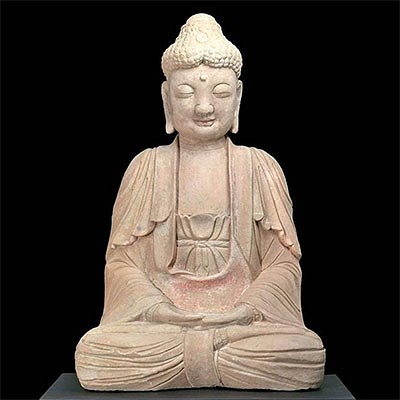Bactrian Lead Wine Ewer with Ram Finial
Lot 70a
About Seller
Artemis Fine Arts
686 S Taylor Ave, Ste 106
Louisville, CO 80027
United States
Selling antiquities, ancient and ethnographic art online since 1993, Artemis Gallery specializes in Classical Antiquities (Egyptian, Greek, Roman, Near Eastern), Asian, Pre-Columbian, African / Tribal / Oceanographic art. Our extensive inventory includes pottery, stone, metal, wood, glass and textil...Read more
Categories
Estimate:
$3,600 - $5,400
Absentee vs Live bid
Two ways to bid:
- Leave a max absentee bid and the platform will bid on your behalf up to your maximum bid during the live auction.
- Bid live during the auction and your bids will be submitted real-time to the auctioneer.
Bid Increments
| Price | Bid Increment |
|---|---|
| $0 | $25 |
| $300 | $50 |
| $1,000 | $100 |
| $2,000 | $250 |
| $5,000 | $500 |
| $10,000 | $1,000 |
| $20,000 | $2,500 |
| $50,000 | $5,000 |
| $100,000 | $10,000 |
| $200,000 | $20,000 |
About Auction
By Artemis Fine Arts
Feb 18, 2021
Set Reminder
2021-02-18 10:00:00
2021-02-18 10:00:00
America/New_York
Bidsquare
Bidsquare : Exceptional Antiquities, Asian, Ethnographic
https://www.bidsquare.com/auctions/artemis-gallery/exceptional-antiquities-asian-ethnographic-6373
Museum-worthy examples of Egyptian, Greek, Roman, Etruscan, Near Eastern, Far East / Asian, Pre-Columbian, African / Tribal, Oceanic, Native American, Spanish Colonial, Russian, Fossils, Ancient Jewelry, Fine Art, so much more! Artemis Fine Arts info@artemisfinearts.com
Museum-worthy examples of Egyptian, Greek, Roman, Etruscan, Near Eastern, Far East / Asian, Pre-Columbian, African / Tribal, Oceanic, Native American, Spanish Colonial, Russian, Fossils, Ancient Jewelry, Fine Art, so much more! Artemis Fine Arts info@artemisfinearts.com
- Lot Description
Central Asia, Bactria–Margiana Archaeological Complex (BMAC) / Bactrian, ca. 3000 to 2000 BCE. An impressive wine ewer presenting an attractive form and a ram's head finial/spout, comprised of heavy lead. The vessel presents with a gadrooned voluminous body rising from a pedestal foot, with a tall pouring spout on one side, a curved tubular handle joining neck to shoulder and presenting a spiraled lower terminal and a knob-like form at the upper end, and finally, the piece de resistance, a tall neck of a contiguous, bulbed form rising to a ram head with a conical fill spout presenting a rolled rim above. The ram is remarkable, with incredibly long curled horns, pointed ears, almond-shaped eyes with delineated pupils, and a prominent snout delineated with flaring nostrils and an open mouth. A wonderful vessel, replete with impressive artistry, meaningful iconography, and marvelous patina that has developed over the ages! Measures 12 1/2"H x 6"W. Size: 6.25" W x 12.375" H (15.9 cm x 31.4 cm)
The ram was a symbol of virility and masculinity that continued to be important through Classical times and even beyond. In fact, Hermes/Mercury was oftentimes accompanied by a ram to symbolize fertility.
Provenance: private Hawaii USA collection; ex-private Ibrahimi collection, California, USA, 2004
All items legal to buy/sell under U.S. Statute covering cultural patrimony Code 2600, CHAPTER 14, and are guaranteed to be as described or your money back.
A Certificate of Authenticity will accompany all winning bids.
We ship worldwide and handle all shipping in-house for your convenience.
#107341Rim of fill spout presents with some bending and cracks. Nicks/tears to periphery of horns as shown. Cracks and areas of separation to bulb forms of the vessel's neck. Indentations to periphery of the pedestal base. Some stains and deposits on surface. Wonderful age patina.Condition
- Shipping Info
-
All shipping is handled in-house for your convenience. Your invoice from Artemis Gallery will include shipping calculation instructions. If in doubt, please inquire BEFORE bidding for estimated shipping costs for individual items.
-
- Buyer's Premium



 EUR
EUR CAD
CAD AUD
AUD GBP
GBP MXN
MXN HKD
HKD CNY
CNY MYR
MYR SEK
SEK SGD
SGD CHF
CHF THB
THB















